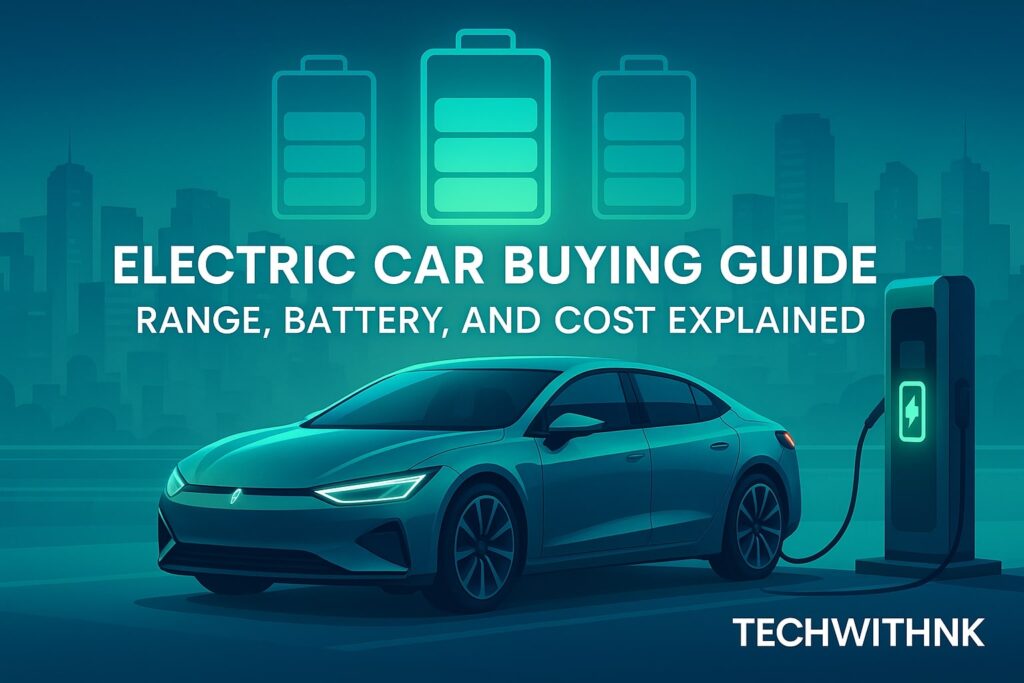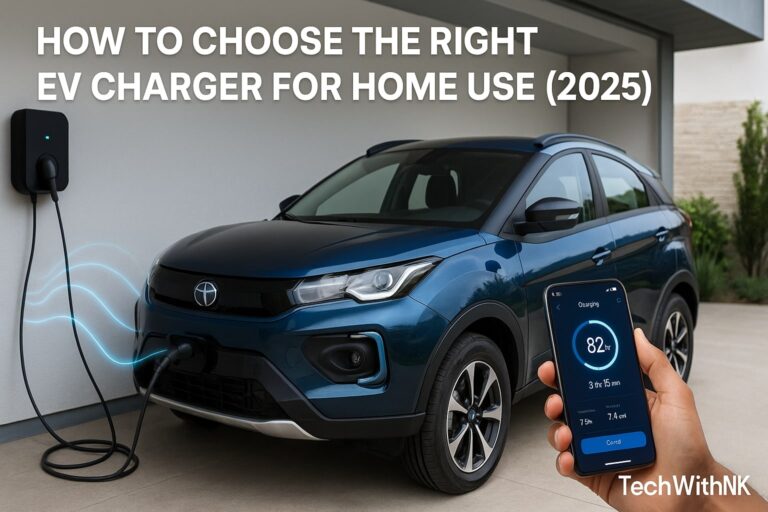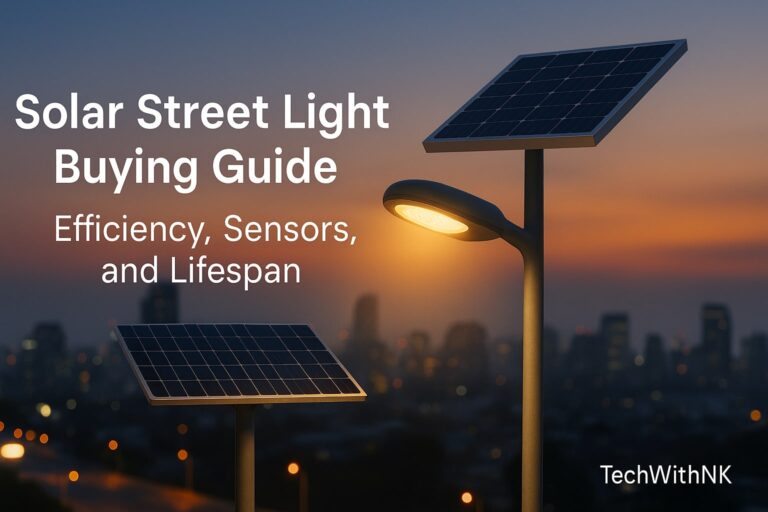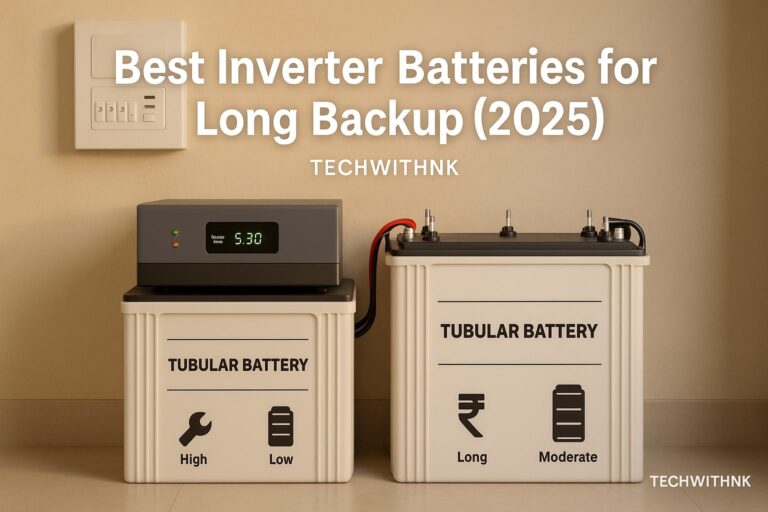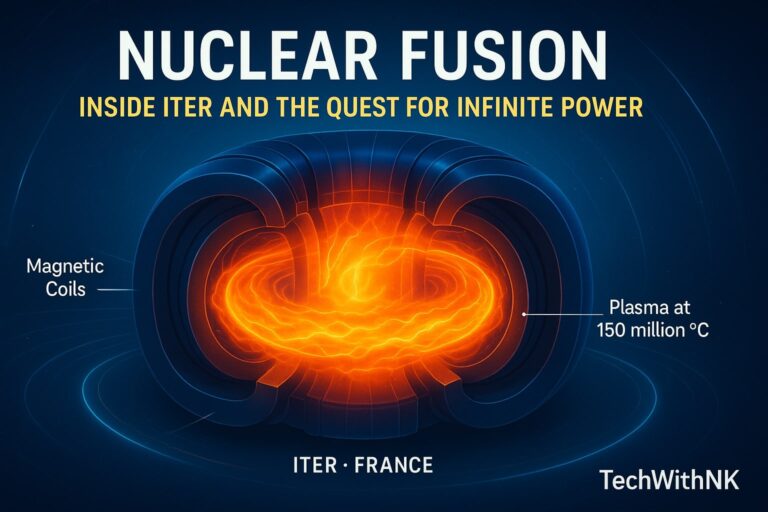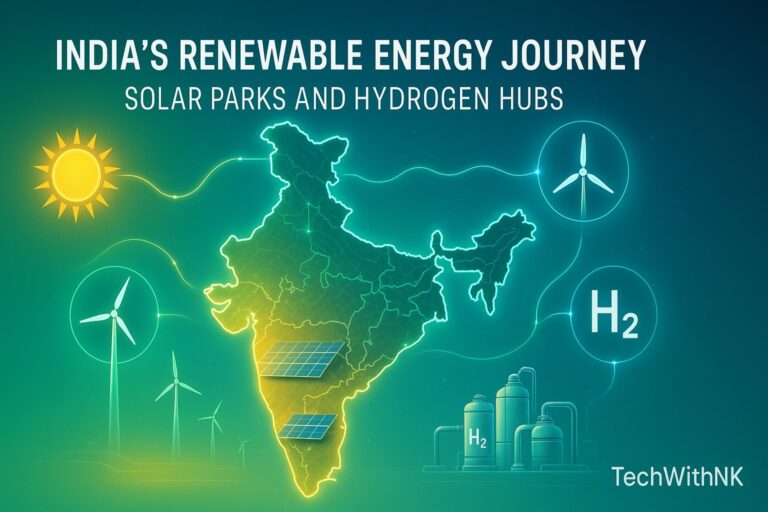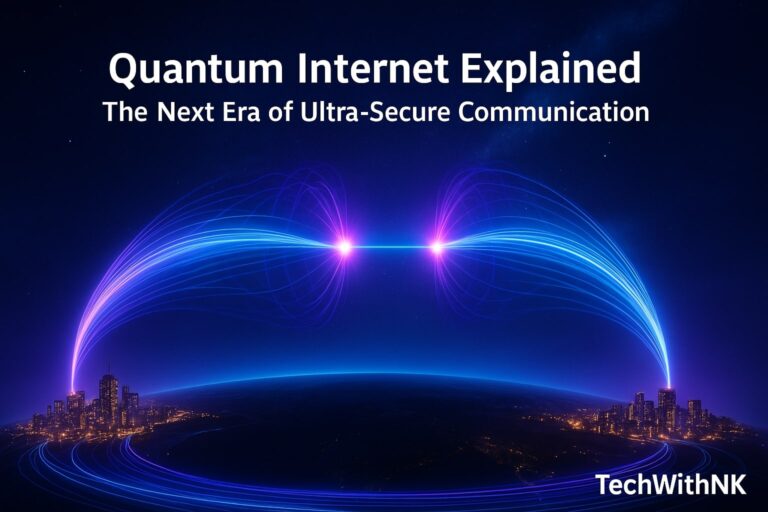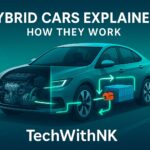🚘 Introduction: Electric Car Buying Guide 2025
The global automotive industry is rapidly transitioning toward sustainable mobility, and electric vehicles (EVs) are at the center of this revolution. In India, the EV market is growing faster than ever — supported by government incentives, rising fuel costs, and increasing environmental awareness.
But for most buyers, understanding EV range, battery type, charging options, and total cost of ownership can be confusing.
This detailed guide breaks down everything you need to know before buying your first electric car in 2025 — from range and battery technology to maintenance, subsidies, and smart buying tips.
Understanding How an Electric Car Works
An electric car operates on a battery-powered electric motor, unlike a petrol or diesel engine.
🔋 Basic Components of an Electric Car
Battery Pack – Stores electrical energy (measured in kWh).
Electric Motor – Converts electric energy into mechanical energy.
Inverter – Converts DC (battery power) to AC (motor power).
Controller – Regulates speed and torque.
Onboard Charger – Manages battery charging from external power.
Charging Port – Connects your EV to a charger.
Power Flow:
Battery → Inverter → Motor → Wheels
No fuel, no engine oil, no exhaust — only clean, silent drive.
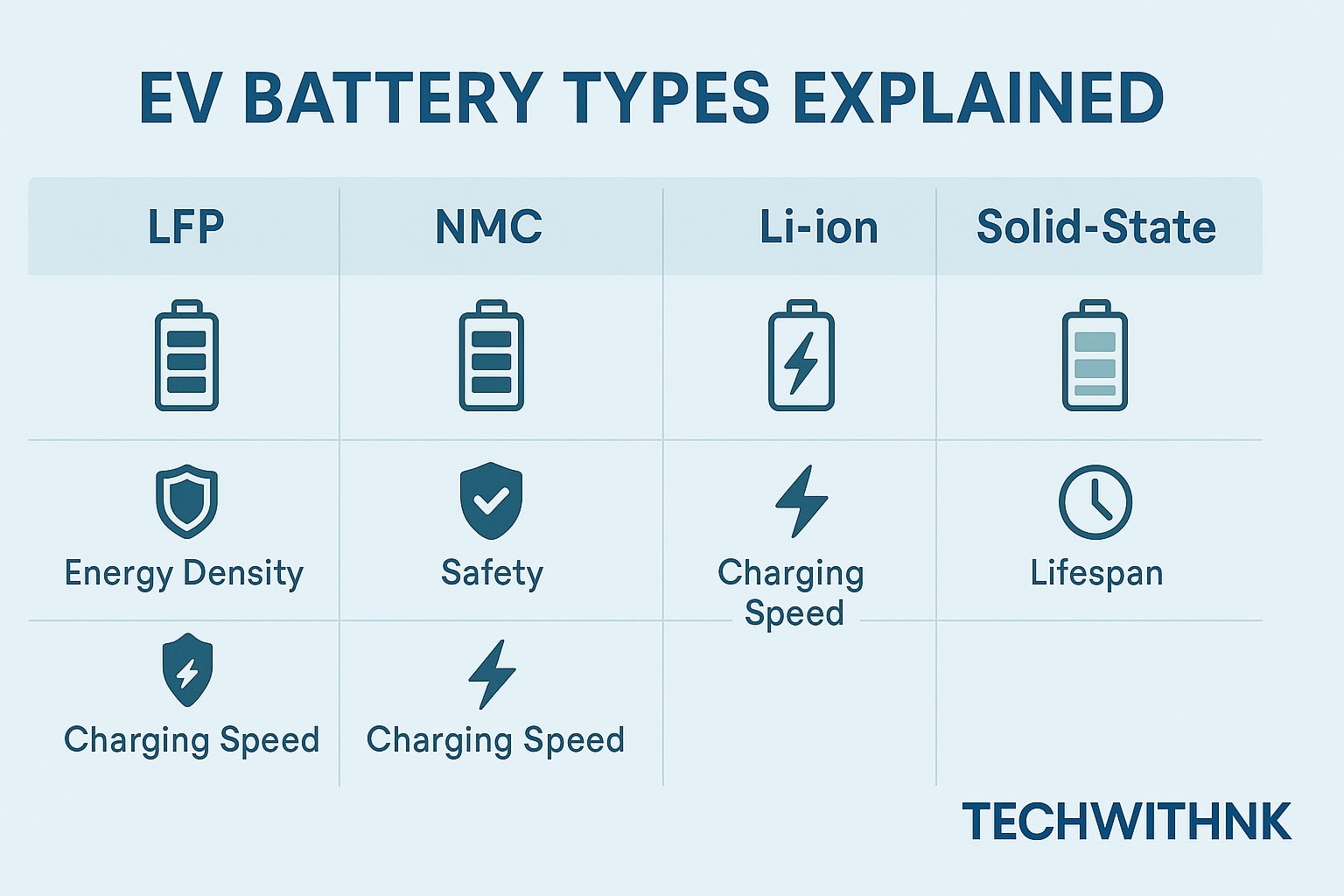
Electric Car Battery Types Explained
The battery is the heart of an electric vehicle. Its performance determines range, charging speed, lifespan, and cost.
🧠 Common Battery Types Used in Electric Cars:
| Battery Type | Description | Pros | Cons |
|---|---|---|---|
| Lithium-Ion (Li-ion) | Most common battery type in EVs. High energy density. | Lightweight, fast charging, long lifespan. | Expensive, sensitive to temperature. |
| Lithium Iron Phosphate (LFP) | Used in affordable Indian EVs (e.g., Tata Nexon EV MR). | Stable, safe, long cycle life. | Slightly lower energy density. |
| Nickel Manganese Cobalt (NMC) | Found in premium EVs (e.g., MG ZS EV, Hyundai Kona). | High range, better performance. | Costlier, uses rare metals. |
| Solid-State Batteries | Future tech, still in development. | Ultra-fast charging, safer, longer life. | Expensive, limited production. |
Pro Tip:
If you’re buying an EV for city driving, LFP batteries are ideal for safety and cost.
If you want long highway range, go for NMC or Li-ion variants.
What Does EV Range Mean?
EV range = The total distance your car can travel on a single full charge.
🧮 Factors Affecting EV Range:
Battery Capacity (kWh): Higher capacity = longer range.
Driving Style: Aggressive acceleration drains the battery faster.
Speed: High speed = more wind resistance = less range.
Air Conditioning/Heater: Reduces range by 10–20%.
Load Weight: More passengers or luggage = less efficiency.
Terrain: Hilly routes consume more energy.
🚗 Average Range by Segment (2025):
| Segment | Example Models | Average Range (ARAI) |
|---|---|---|
| Compact Hatchback | Tata Tiago EV, Citroen eC3 | 220–320 km |
| SUV | Tata Nexon EV, MG ZS EV | 350–450 km |
| Premium Sedan | BYD Seal, Hyundai IONIQ 5 | 500–600 km |
| Luxury EVs | BMW i4, Mercedes EQC, Audi e-tron | 600+ km |
EV Charging Types & Time
Charging is the fueling system for electric cars.
⚡ Types of EV Charging:
| Charger Type | Power | Time to Charge | Where to Use |
|---|---|---|---|
| Slow AC (Level 1/2) | 2–7 kW | 6–10 hours | Home charging |
| Fast DC (Level 3) | 25–150 kW | 30–90 mins | Public charging stations |
| Ultra-Fast / Superchargers | 150–350 kW | 15–30 mins | Highways, premium EVs |
Tip: Install a home wallbox charger (7.2kW) for convenience.
🏠 Home Charging vs Public Charging
Home Charging: Ideal for daily use; costs ₹2–₹5 per unit (cheap).
Public Fast Charging: ₹15–₹25 per unit (expensive but quick).
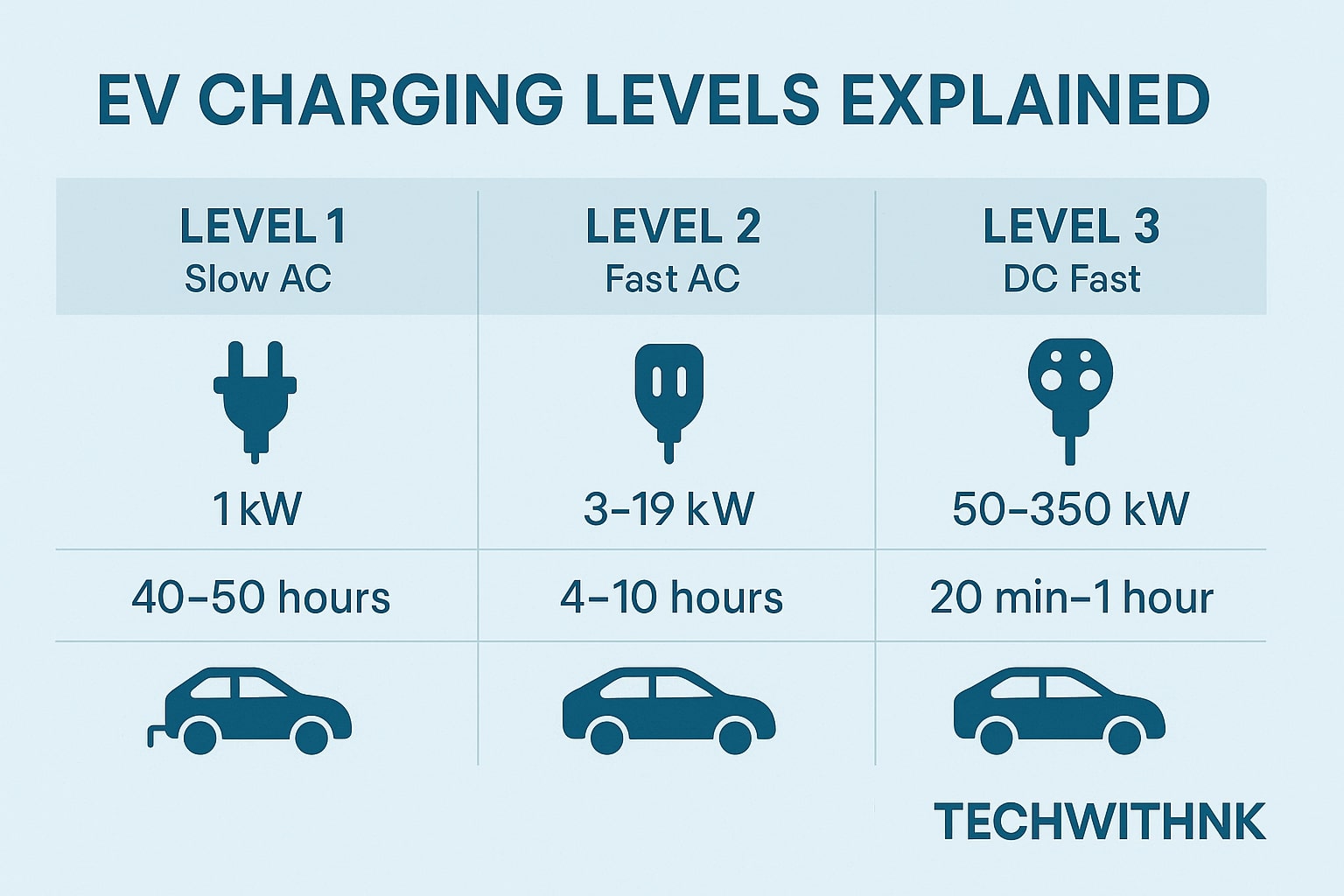
Electric Car Cost Breakdown (2025 India)
While EVs have a higher initial cost, they offer huge long-term savings.
⚙️ Upfront Cost
EVs cost ₹3–5 lakh more than petrol cars.
Government subsidies (FAME-II, state EV policies) can reduce cost by ₹1–2 lakh.
💵 Running Cost (Per km)
| Vehicle Type | Cost/km | Fuel/Power Used |
|---|---|---|
| Petrol Car | ₹8–₹10 | Petrol @ ₹100/litre |
| Diesel Car | ₹6–₹8 | Diesel @ ₹90/litre |
| Electric Car | ₹1–₹1.5 | Electricity @ ₹6/unit |
🔧 Maintenance Cost
No oil changes, clutch, or exhaust.
60–70% lower maintenance than ICE vehicles.
🪙 Battery Replacement
Cost: ₹4–₹6 lakh (after 8–10 years).
Warranty: 8 years or 1.6 lakh km (standard for most EVs).
Government Incentives & Tax Benefits
The Indian government supports EV adoption through several schemes:
⚡ FAME-II Subsidy:
₹10,000–₹20,000 per kWh up to ₹1.5 lakh discount.
Available for vehicles registered as personal EVs.
🧾 Income Tax Benefit:
Under Section 80EEB: ₹1.5 lakh tax deduction on EV loan interest.
🚗 State Policies:
| State | Incentive | Extra Benefit |
|---|---|---|
| Delhi | ₹10,000/kWh (max ₹1.5L) | Free registration, road tax waived |
| Maharashtra | ₹1.5L + scrappage bonus | |
| Gujarat | ₹10,000/kWh | Max subsidy ₹1.5L |
| Tamil Nadu, Telangana | Lower electricity rates for EVs |
Top Electric Cars in India (2025)
| Rank | Model | Range | Battery | Price (₹ lakh) |
|---|---|---|---|---|
| 1 | Tata Nexon EV LR | 465 km | 40.5 kWh | 17–21 |
| 2 | MG ZS EV | 461 km | 50.3 kWh | 23–27 |
| 3 | BYD Atto 3 | 521 km | 60.5 kWh | 34 |
| 4 | Hyundai IONIQ 5 | 631 km | 72.6 kWh | 46 |
| 5 | Tata Tiago EV | 315 km | 24 kWh | 8–12 |
| 6 | Mahindra XUV400 | 456 km | 39.4 kWh | 17–20 |
| 7 | Citroen eC3 | 320 km | 29.2 kWh | 12–14 |
Battery Life & Maintenance Tips
Avoid 100% charge daily. Keep between 20–80%.
Don’t drain completely. Increases battery stress.
Park in shade. Heat reduces life span.
Use regenerative braking. Saves energy.
Update software regularly. Manufacturers optimize performance.
Charging Network in India (2025)
India now has over 12,000+ public charging stations, expanding rapidly.
Leading networks: Tata Power EZ Charge, Statiq, ChargeZone, BP Pulse, Zeon Charging.
Apps like PlugShare and Tata EZ Charge show live charger availability.
Future: Highways like Delhi–Mumbai and Chennai–Bangalore are being fitted with fast chargers every 50 km.
EV vs Petrol Car – 5-Year Cost Comparison
| Factor | Petrol Car | Electric Car |
|---|---|---|
| Purchase Price | ₹10 lakh | ₹13 lakh |
| Fuel/Power (5 years) | ₹4 lakh | ₹70,000 |
| Maintenance | ₹60,000 | ₹20,000 |
| Total (5 years) | ₹14.6 lakh | ₹13.9 lakh |
| Savings | – | ₹70,000+ |
Conclusion: Even with higher initial cost, EVs save more in long term.
How to Choose the Right EV for You
| Need | Best Choice |
|---|---|
| City Commuting (short range) | Tata Tiago EV, Citroen eC3 |
| Family SUV | Nexon EV, XUV400 |
| Long Distance / Premium | MG ZS EV, BYD Atto 3 |
| Luxury & Tech | IONIQ 5, BMW i4 |
Checklist before buying:
✅ Check real-world range
✅ Confirm home charging setup
✅ Evaluate after-sales service
✅ Compare insurance & warranty
Future of Electric Cars in India
By 2030, India aims for 30% electric car penetration.
Upcoming trends:
Solid-state batteries
800V ultra-fast charging
Swappable battery networks
Hydrogen fuel-cell hybrids
The EV ecosystem will redefine mobility with zero-emission, connected, and autonomous vehicles.
🧭 Conclusion: The Smart Way Forward
Electric cars are no longer a luxury — they’re a smart investment for India’s green future. Whether you want to save fuel, reduce pollution, or experience smooth silent drives, EVs tick all the boxes.
When you understand range, battery type, charging options, and total cost, buying an EV becomes simple and rewarding.
Choose wisely. Drive electric. Drive the future. 🌱
